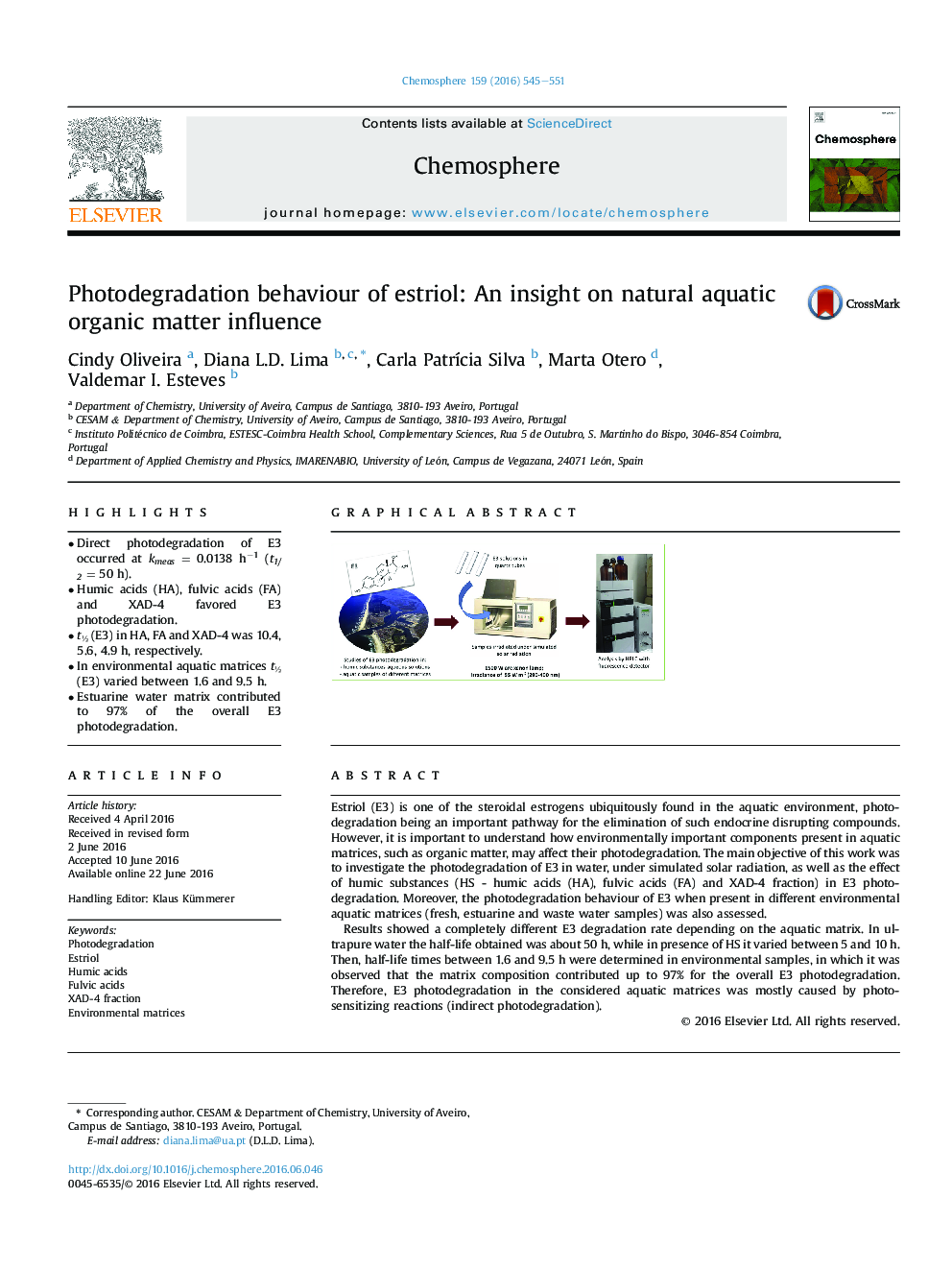| کد مقاله | کد نشریه | سال انتشار | مقاله انگلیسی | نسخه تمام متن |
|---|---|---|---|---|
| 4407432 | 1618812 | 2016 | 7 صفحه PDF | دانلود رایگان |
• Direct photodegradation of E3 occurred at kmeas = 0.0138 h−1 (t1/2 = 50 h).
• Humic acids (HA), fulvic acids (FA) and XAD-4 favored E3 photodegradation.
• t½ (E3) in HA, FA and XAD-4 was 10.4, 5.6, 4.9 h, respectively.
• In environmental aquatic matrices t½ (E3) varied between 1.6 and 9.5 h.
• Estuarine water matrix contributed to 97% of the overall E3 photodegradation.
Estriol (E3) is one of the steroidal estrogens ubiquitously found in the aquatic environment, photodegradation being an important pathway for the elimination of such endocrine disrupting compounds. However, it is important to understand how environmentally important components present in aquatic matrices, such as organic matter, may affect their photodegradation. The main objective of this work was to investigate the photodegradation of E3 in water, under simulated solar radiation, as well as the effect of humic substances (HS - humic acids (HA), fulvic acids (FA) and XAD-4 fraction) in E3 photodegradation. Moreover, the photodegradation behaviour of E3 when present in different environmental aquatic matrices (fresh, estuarine and waste water samples) was also assessed.Results showed a completely different E3 degradation rate depending on the aquatic matrix. In ultrapure water the half-life obtained was about 50 h, while in presence of HS it varied between 5 and 10 h. Then, half-life times between 1.6 and 9.5 h were determined in environmental samples, in which it was observed that the matrix composition contributed up to 97% for the overall E3 photodegradation. Therefore, E3 photodegradation in the considered aquatic matrices was mostly caused by photosensitizing reactions (indirect photodegradation).
Figure optionsDownload as PowerPoint slide
Journal: Chemosphere - Volume 159, September 2016, Pages 545–551
